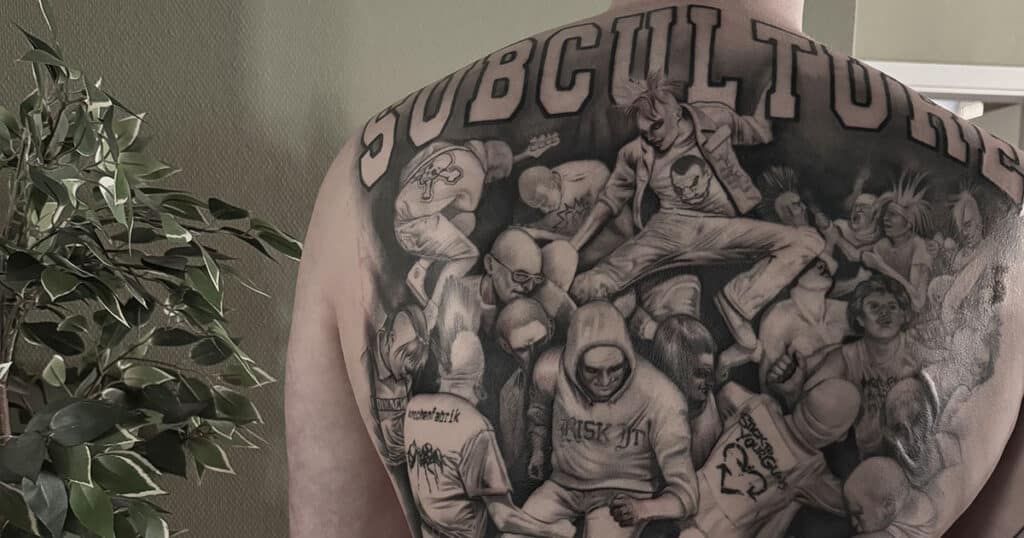From graffiti-laden streets to the roar of custom motorcycles, urban subcultures have been a hotbed of creativity, advocacy, and personal expression for decades. At the heart of many of these subcultures, we find a common element: tattoos. This is precisely what we want to highlight when talking about ‘subculture for life’: the essential role of tattoos in these movements.
At Poniente Tattoo Studio, we explore how ink has helped define collective identities.
Hip-hop, forged in concrete blocks and graffiti-covered streets, turned tattoos into personal manifestos. From names that shout “I grew up here” to verses only understood if you’ve been in the trenches, each design carries a raw, unfiltered message. The ink is a map: neighborhoods, losses, glories. An art as authentic as an improvised beat on the subway at dawn.
In the 70s, punk rock not only gave us music that went against the establishment but also an aesthetic that defied certain norms. Tattoos in this subculture were a statement of intent and, in many cases, a rejection of conformity. Simple designs like anarchist symbols, incendiary phrases, and other insignias became emblems of resistance.
In the world of skateboarding, tattoos are like scars: inevitable and storied. A broken board, a failed trick, a perfect afternoon in the bowl. Each line on the skin is a testament to resilience, style, and controlled chaos. Words borrowed from punk songs, characters from underground comics, and sometimes even scars are camouflaged under the needle. Curious? In the 90s, tattooing your crew’s logo was as mandatory as nailing the last trick in a demo.
In all these subcultures, tattoos function as a bridge between individual identity and group belonging. Each tattoo tells the story of who we were but also of who we want to be. At Poniente Tattoo Studio, we understand tattoos as a process, more than an end, as a way to turn the skin into an archive.
